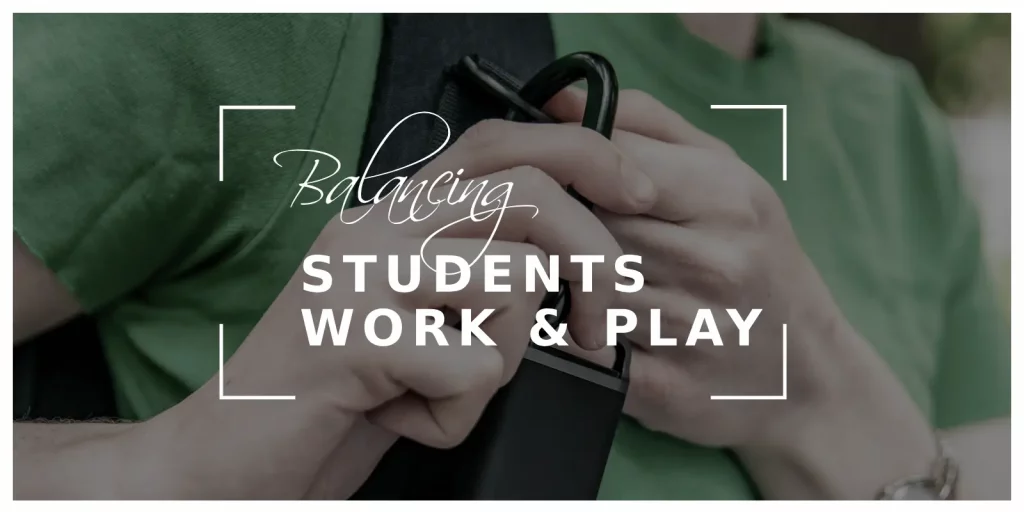Students are often caught up in the whirlwind of academia while striving to maintain a semblance of a social life and personal time. The interplay between meeting deadlines, participating in extra-curricular activities, and ensuring self-care mustn’t be overlooked. Achieving an optimal balance between work and play is pivotal for student’s mental well-being and academic progress. Below, we delve into effective strategies that help students strike this critical balance.
Understanding the Importance of Equilibrium in Student Life
Many students underestimate the importance of maintaining a balanced lifestyle during their academic journey. Achieving equilibrium ensures that while they focus on academics, they also prioritize personal growth and relaxation. This balance fosters an environment conducive to productivity and creativity, helping students avoid burnout and its negative impacts on mental health and grades.
Recognizing signs of imbalance, like chronic stress or declining grades, is crucial for mitigating potential issues. Engaging in activities such as sports, arts, or social events not only counters academic pressures but also helps develop soft skills for the professional world. Embracing this balance early sets a strong foundation for managing future responsibilities with greater ease, much like learning to enjoy a sweepstakes casino online in moderation.
Time Management Strategies for Balancing Academics and Leisure
Mastering time management is crucial for students to balance academics with leisure effectively. Setting realistic goals and identifying peak productivity periods is essential for optimizing study sessions. Allocating time slots for work and relaxation is crucial, ensuring neither is neglected. Prioritizing tasks based on urgency and importance helps organize the agenda, while using tools like planners or digital calendars can remind students of commitments and relaxation periods.
Maintaining flexibility within a structured schedule is beneficial for unforeseen challenges or leisure opportunities. Strategically allocating downtime can enhance learning productivity, as taking breaks to engage in leisure activities recharges focus for subsequent study sessions. Quality over quantity is key when managing time for work and play.
The Role of Technology in Managing Schoolwork and Downtime
In today’s digital age, technology is vital for students managing academic workloads and leisure time. Educational apps and interactive online courses can enhance productivity, while online resources like academic forums and pursuing an information systems master’s offer flexible learning options that accommodate personal schedules.
Mindful navigation of technology is crucial; students should use it to boost efficiency rather than distract them. This can involve setting boundaries, such as putting away devices during study time or using website blockers. Entertainment technology, like video games, can provide balanced relaxation, but it’s important to enjoy them in moderation to avoid interfering with study time or sleep.
Setting Priorities and Boundaries: A Student’s Guide to Work-Life Harmony
Achieving balance in life involves setting clear priorities and boundaries. Identifying academic priorities while balancing personal time is crucial for a guiding framework. Aligning daily actions with long-term goals helps maintain these priorities. Communicating boundaries to family, friends, and professors helps maintain these priorities.
Decluttering one’s life from non-essential tasks can free up time, often requiring saying no to certain opportunities. Deciphering between urgent and important tasks is vital for efficient time allocation. Success in creating these boundaries often relies on self-discipline, which develops through consistent practice. Sticking to priorities becomes habitual, facilitating smoother work-life integration that respects personal limits and aspirations.
Harnessing the Power of Routine to Maintain Academic and Personal Well-being
A routine is essential for maintaining a balance between academic responsibilities and personal well-being. It involves setting specific times for study, exercise, socializing, and relaxation, creating a rhythm that becomes second nature over time. Sticking to a routine offers stability and predictability, reducing decision fatigue. It also encourages healthy habits like adequate sleep, regular meals, and exercise, which are integral components of a student’s overall well-being.
Morning and nighttime routines are particularly powerful, serving as bookends to the day. A good start in the morning sets the tone, while winding down at night ensures recharge for the days ahead. A holistic routine respects the body’s need for routine amidst the chaos of student life.
Overall, the journey to balancing academia and personal time is riddled with challenges but is also deeply rewarding. A mindful approach to managing obligations and downtime—while leveraging time management skills, technology, and a structured routine—can mold a productive and satisfying student life. By placing equal importance on work and play, students pave the way for academic achievement and personal fulfillment.
